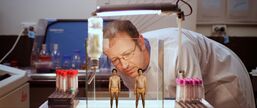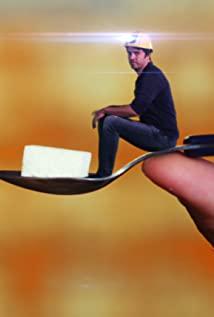some insights
1. Record the harm caused by a high-sugar diet for 60 consecutive days (all common "healthy" foods, such as low-fat yogurt, cereals, fruit jams, etc., do not consume desserts, chocolates in the experiment , ice cream), although the sample size and rigor are not enough, it has a certain warning effect - sugar is delicious, but long-term high-sugar diet is really bad, it increases the risk of fatty liver, type 2 diabetes, heart disease, and also It is easy to bring eye bags, skin acne, emotional instability and other problems;
2. The filming techniques and post-editing are very interesting, taking the audience to understand step by step how sugar circulates in the liver and blood after being absorbed, the difference between glucose, sucrose and fructose, how the glycation reaction leads to emotional instability, addiction, fatty liver and other problems , very easy to understand;
3. This documentary also exposes the dark side of some food industry, they keep emphasizing that obesity is caused by excessive calorie intake and lack of exercise, advocating calorie reduction and low-fat diet, but satiety comes from high-quality fat and protein, not from high-quality fat and protein. Sugar, low-fat foods become sweeter and sweeter in order not to affect the taste of the food; it is not the calories that cause obesity, but the source of calories;
some notes
Why is sugar easy to cause emotional instability?
First, the brain needs to receive the visual stimulus of the trigger (photo of food, or real food), further release dopamine (this is an evolved desire, early sugar is still very rare), and then tell you "eat it, you Sugar is needed for a quick energy boost and to stabilize our mood.” And then we eat sugary foods.
When we put food in our mouth and feel its sweetness, our blood sugar rises rapidly. At this point, we secrete opioids, as well as beta-endorphins, to produce a feeling of pleasure (the brain area stimulated by sugar intake is the same area stimulated by nicotine and cocaine).
The body then responds to the sugar by releasing insulin, which takes the sugar into the cells and converts it into energy, so the blood sugar drops rapidly, which causes the brain to lose its sense of pleasure.
In response to this situation, the body releases stress hormones (like adrenaline), which signal to the brain to eat more sugary foods in order to restore the feeling of pleasure. In this cycle, we will release more insulin again, causing blood sugar to drop again, and the problem with the secretion of adrenaline is - leading to anxiety, panic attacks.
So that kind of pleasure can’t last. If we eat sugary foods regularly and build this pleasure reward mechanism, we will develop a subconscious or unconscious habit, which is easily affected by more sugary foods. Photos inspire. The more high-sugar foods you eat, the stronger your cravings for high-sugar foods and the desire to continue eating them.
The fructose in sugar also affects our appetite control, and the glucose in sugar affects our mood. Combined, the spikes in blood sugar can cause mood swings, and we can become very unstable.
Why is sugar easy to cause fatty liver?
Ingesting fructose will cause fat to accumulate on the stomach. If there is fat accumulation on the stomach, it is easy to suffer from many metabolic diseases, such as type 2 diabetes, obesity, and heart disease.
After sugar enters the body, it is decomposed into two parts - fructose and glucose. Both of these sugars enter the liver. After entering the liver, the glucose can be efficiently processed. Some glucose will be immediately converted into energy, and some will be stored. For later use, like a spare battery.
But this is not the case with other fructose, the liver has no mechanism to process fructose, because fructose is very rare in nature, so whether fructose is needed or not, it will come out of the blood, and if all the backup batteries are full, fructose will Converted to fat quickly, some of the fat stays in the liver, which can lead to a higher risk of developing insulin resistance and possibly developing diabetes.
Alternatively, fat in the liver is sent into the bloodstream where it is converted into triglycerides, which can cause obesity, clogged arteries and heart disease.
When we eat a lot of sugar, and carbohydrates like bread and pasta, a lot of glucose is produced, insulin is released, and insulin acts like a key that opens the door to cells, allowing these cells to take in glucose and glucose to leave the bloodstream , converted into energy, the more glucose in the blood, the more insulin is released. But what's more critical to us is that if there is insulin in the blood, processing glucose, it commands the fat cells to hold on to fat, effectively suspending the fat-burning process.
So, if we consume a lot of sugar, we are consuming fat, which accumulates in the liver.
View more about That Sugar Film reviews










